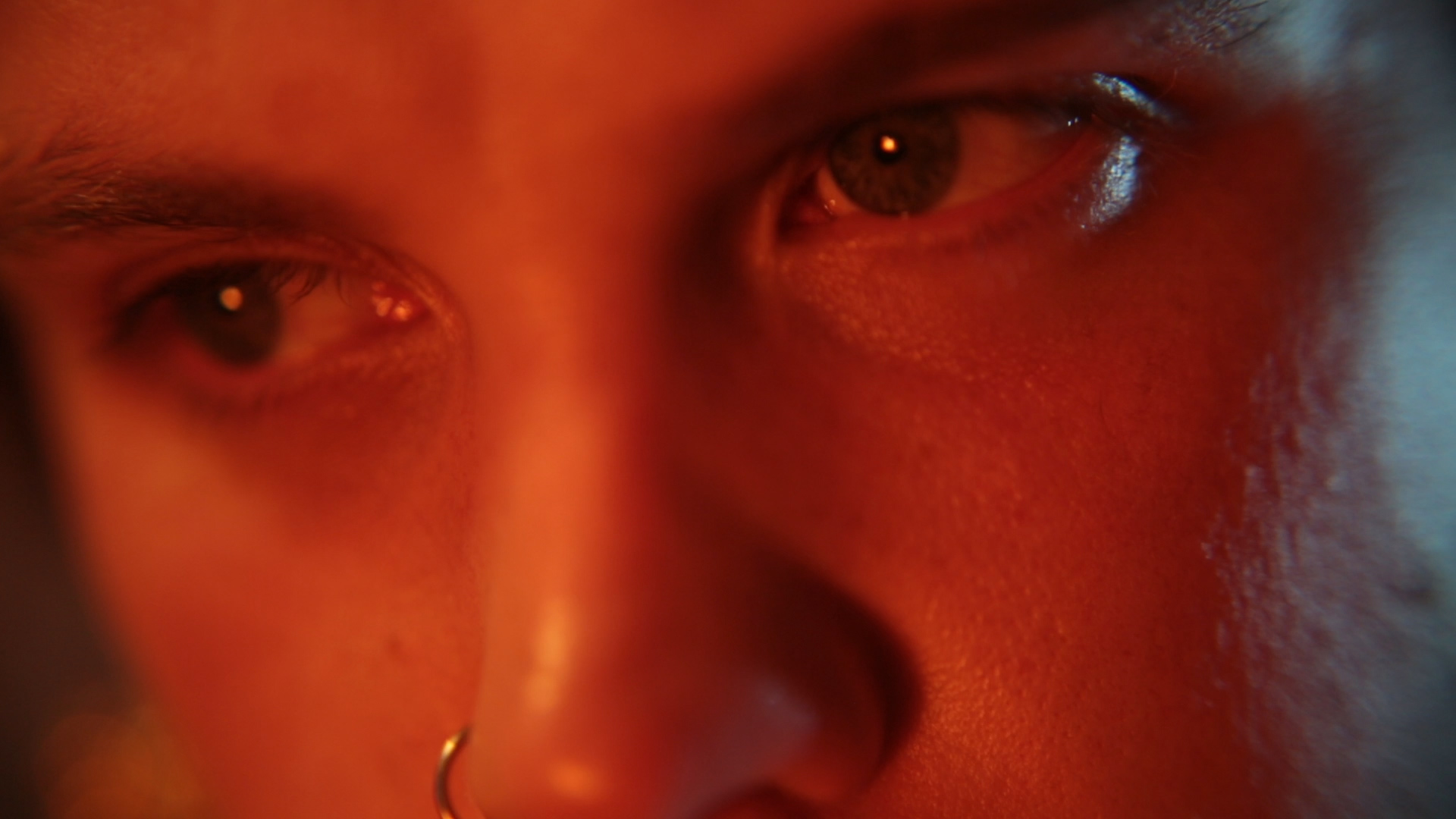
Jamie Crewe‘s new film Ashley begins with the title character walking steadily away from the camera down a country path. Glowing green ferns and foliage create a tunnel as they wheel a purple suitcase towards a lonely seaside cottage. There, they spend the weekend alone—or so it seems—engulfed by the majesty of the West Scottish landscape and wrestling with heartbreak, solitude and self-destruction. The forest and beaches harbour dark spirits which cannot be suppressed. Taking cues from classic horror movies, Jamie Crewe explores the desire to connect with oneself, specifically within a trans context, while feeling estranged from who one was in the past, as anxiety builds about the future.
Presented by Lux and Lux Scotland as part of Crewe’s Margaret Tait Award commission, the 45-minute film features Crewe as Ashley on screen, and performance artist Travis Alabanza as their voiced interior monologue. The film, Crewe says, “animates the fears, stresses, and vivid transformations of a certain kind of trans life”. Alabanza’s script emphasises the entwinement of Ashley’s body, which they describe as “shapeless, neutered, ineligible for love”, with the rural setting. The film begins with a warm, skin-like amber hue before giving way to cold marine greys. Threat lingers throughout, transmitted to the audience via perspective changes which see the screen blurred as Ashley becomes increasingly disoriented. The narration is sparse at first but then builds in observational detail as Ashley’s muted self-belief dissipates. “Does my abandonment prove I’m a woman?” they wonder.
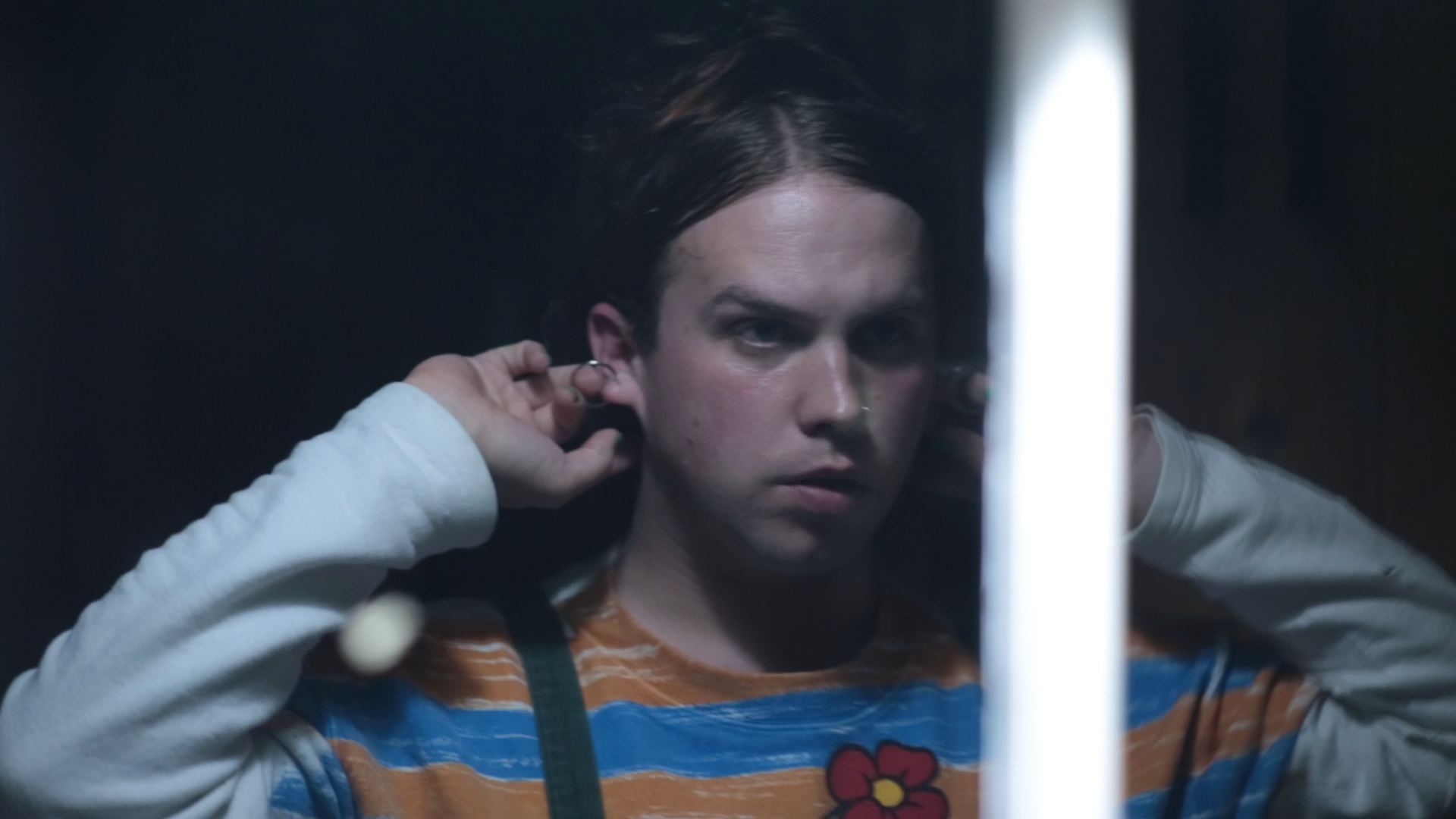
Can you talk through Ashley’s classic horror influences, and how you conceive of the relationship between the genre and the trans subjectivity of the film?
The direct pool of influences for Ashley was pretty specific; I’ve always really loved what gets called ‘folk horror’. These are mostly British and Irish films (or TV episodes, or teleplays) from the 1960s to the 1980s which combine some wild landscape menace with a kind of kitchen sink compactness. The ones I particularly liked, and which inspired Ashley, were at the less ornate end of this tradition: stories of contemporary women who find themselves in the countryside, through desire or obligation, and who suffer through their particular gendered vulnerabilities, which might be single motherhood, reproductive agency, pregnancy anxiety, or more.
I love working in traditions, so the central conceit of Ashley came to me really quickly. I wanted to work in that genre, and make transfemininity the particular gendered vulnerability. Putting this kind of story in that lineage is an attempt to grasp legitimacy, a way of showing that among these variations of feminine experiences, here is another. It also suggests a more unpalatable logic: through a horrifying experience femininity might be proved, or earned.
“Horror is one of most embodied cinematic genres, almost meta-cinema. The injunction to ‘sit still and watch’ becomes a squirming endurance”
I wanted to tell a story that addressed messy, inchoate parts of a gendered experience, refusing to err on the side of discretion, or positive representation aimed at charming cis audiences, while using a form that was very much about pursuing authenticity: a robust addition to the sub-genre, a film for cinema, and a genuine (if somewhat slow-burning) horror experience. I think horror is one of most embodied cinematic genres, almost meta-cinema. The general cinematic injunction to ‘sit still and watch’ becomes a squirming endurance; viewers watch through their fingers, pray for a scene to finish, but generally don’t leave. That experience informs a lot of what happens narratively in Ashley too.
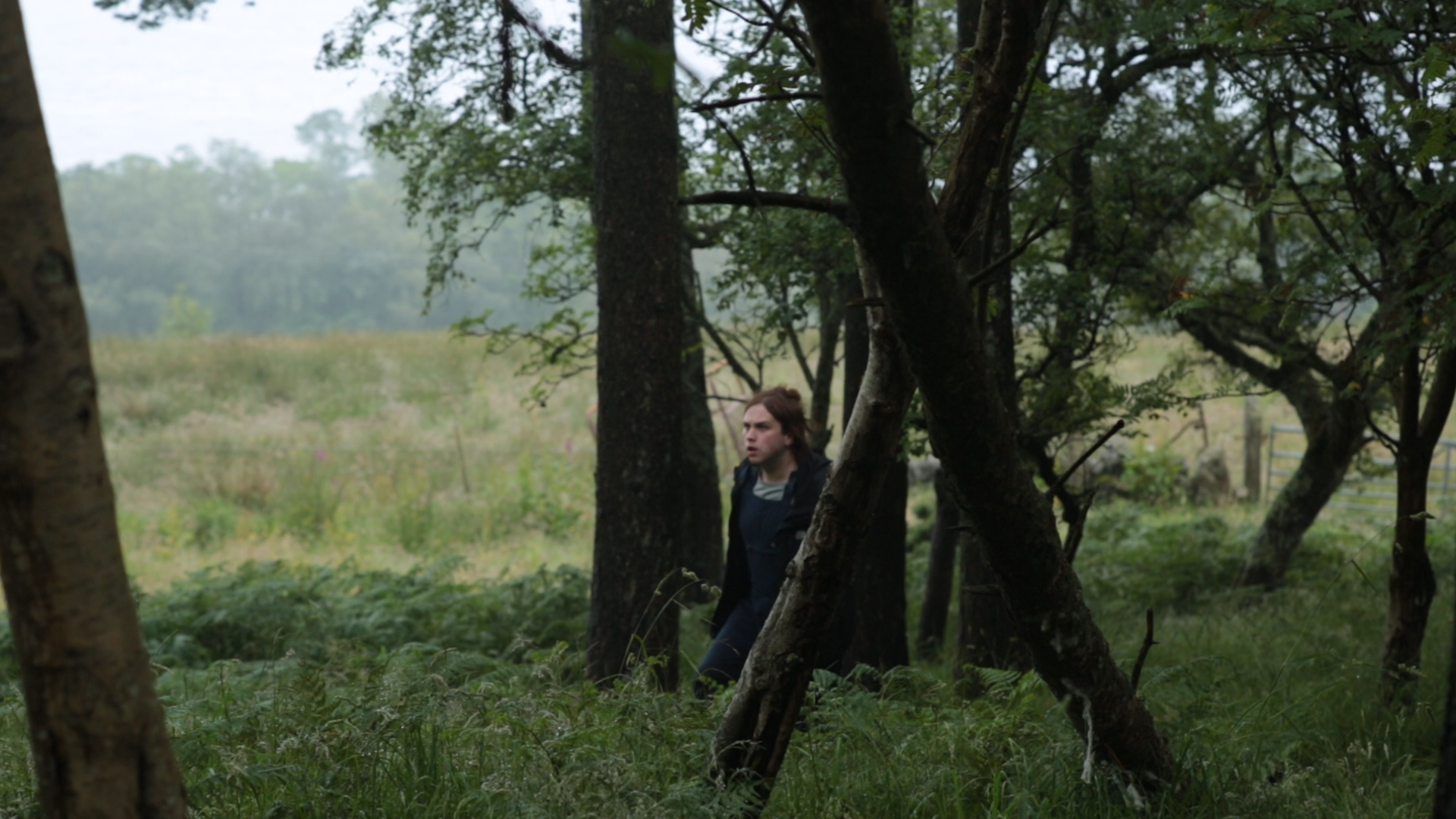
Ashley is described as a “semi-autobiographical rural horror film”. How does this setting allow you to create meaning in a way that urban, or any kind of more populated space, would not?
I grew up in the Peak District, and I have a complex relationship with the countryside. On the one hand I love nature and rural landscapes, and a huge part of my heart lives in heather, birch trees, cold wind, the sea, the moors, limestone, bog myrtle, gorse. On the other hand, growing up as a queer person in a conservative rural place, in which I was for a long time the only queer person I knew, was very hard. I wasn’t just isolated, but bullied and stigmatised too. Part of me would love to move back to the countryside, and Scotland has some of the best, but could I ever go back to a small town life that is overwhelmingly white, straight, politically conservative? No. That’s why I’m staying in the city, even though it splits my heart.
“The body and the voice slip in and out of kinship in Ashley: there are moments which suggest the voice might belong to someone else”
My character in Ashley feels similarly. The rural place they go in the film feels like home—“What a gift! Back in the countryside,” they say on entering the gorgeous cottage—and like home, it’s full of strange silences, bad energies, vague antipathy, and an implacable erosion of personhood. This curdled vision of the countryside, of course, comes from an errant child. I can’t provide any insight on what it’s like to be a queer person living in the countryside today, though its something I’m always interested in learning about.
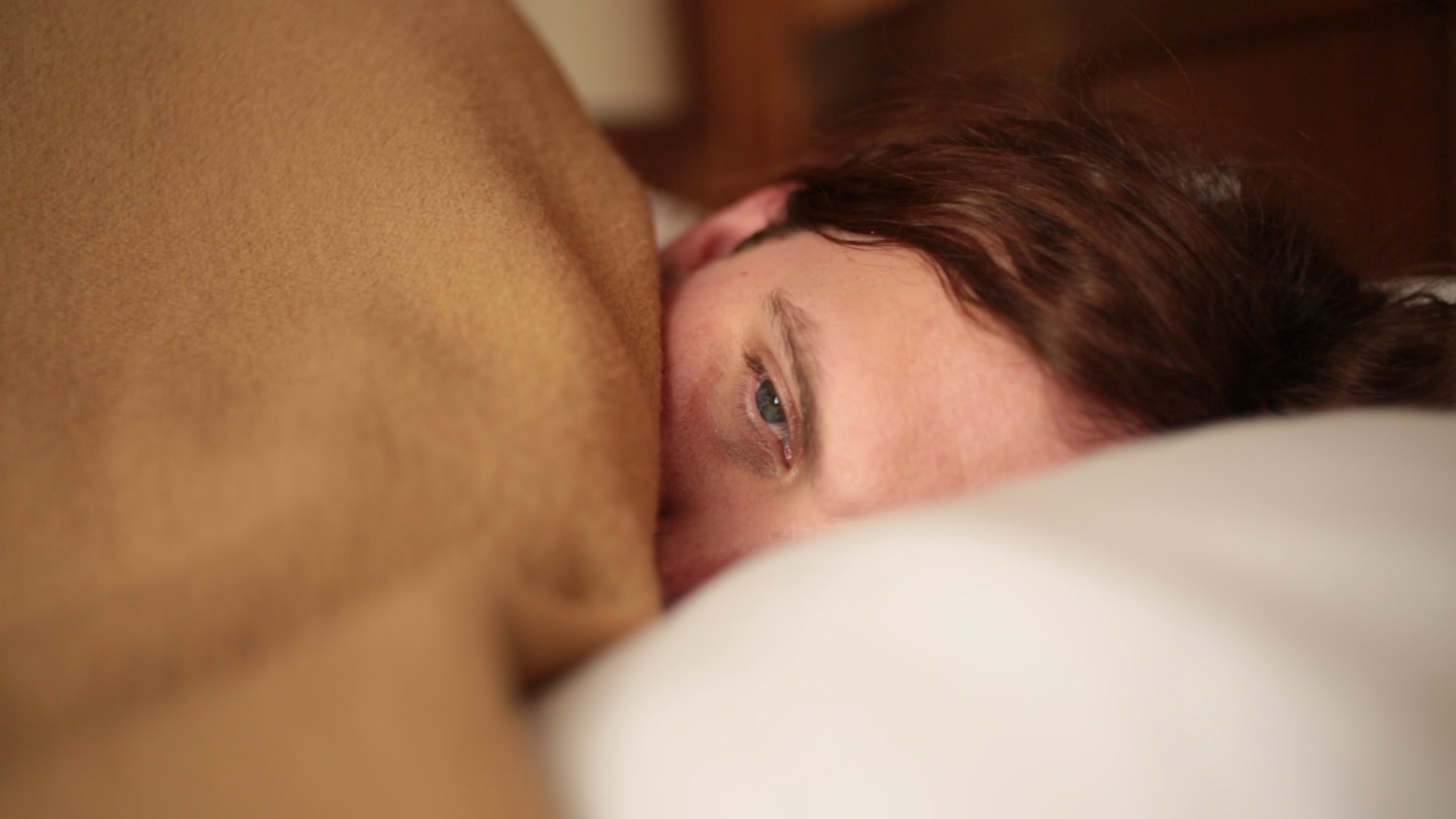
Disembodiment and dysphoria are important themes throughout—at one point Ashley asks “was that my body or my mind?”—and yourself and Travis splitting roles contributes to this too. How central are these ideas to your work?
To Ashley in particular, disjunction and discontinuity of mind and body was very important. On a narrative level, Ashley is very out of touch with their body: they describe often feeling blows only “days or years after they had been inflicted”, and in the immediate aftermath just being left with “some strange, acrid silt sloshing around inside [them], and no words to explain”. This was something that, after completing Ashley, I recognised in reading Bessel van der Kolk’s The Body Keeps the Score: Brain, Mind, and Body in the Healing of Trauma. He describes “alexithymia”, a condition in which traumatised people are unable to feel the feelings moving through their bodies, even as, for example, tears stream down their face. Dramatic moments in the film happen in much the same way: terrors flare and then disappear completely.
“Isolated, bouncing off fear and memory, Ashley’s sense of gender reaches a kind of terminal momentum”
Having Travis narrate, playing “Ashley’s Voice” while I wordlessly played “Ashley’s Body”, was particularly inspired by the BBC horror series West Country Tales, most episodes of which are narrated throughout, with very little diegetic speech. Extending on this device felt really apt and exciting for Ashley. I wanted Travis to narrate for several reasons: because of their skill in spoken performance, because I wanted another transfeminine person to provide the narration, and because Travis and I are friends, and I know we share experience of some of the emotional landscape described in the film.
I think that the body and the voice slip in and out of kinship in Ashley: there are moments which suggest the voice might belong to someone else; when the body struggles to express the voice’s stated thoughts or feelings; when the body seems to escape the voice’s attention, and show something that pushes against the pinning down of thought and self that narration enacts.

The film is said to “take an experience of modern femininity and mine it for terror”. Yet so much of gendered experience is tied up in social relations, an area which Ashley does not, on the surface at least, deal with directly. How are you able to explore this femininity through a singular character? Or does Ashley stand for more than that?
I think all of our experiences of gender rely on interrelation. There is a character in the film whose relationship influences Ashley’s sense of gender a lot, but he exists only as a memory: this older, richer, cis male ex who left them at some point in their past. As this person isn’t in Ashley’s life, everything is projection: the ex is a mystery which provokes their insecurities, worries, and weird questions without answers.
I haven’t thought of it before, but I think Ashley might be an exploration of gender in isolation. I’ve definitely had some of my most comfortably gendered moments in the countryside, alone or with friends and lovers who, I think, understand me. In these situations there was a strange melting of gender, something which could feel so fraught and present on—for example, a crowded pavement, became almost irrelevant, which was both pleasant and confusing. These states could be interrupted at any moment. I walk back to our tent from the campsite showers with a towel wrapped around my head, and a man looks at me hard: suddenly I’m self-aware.
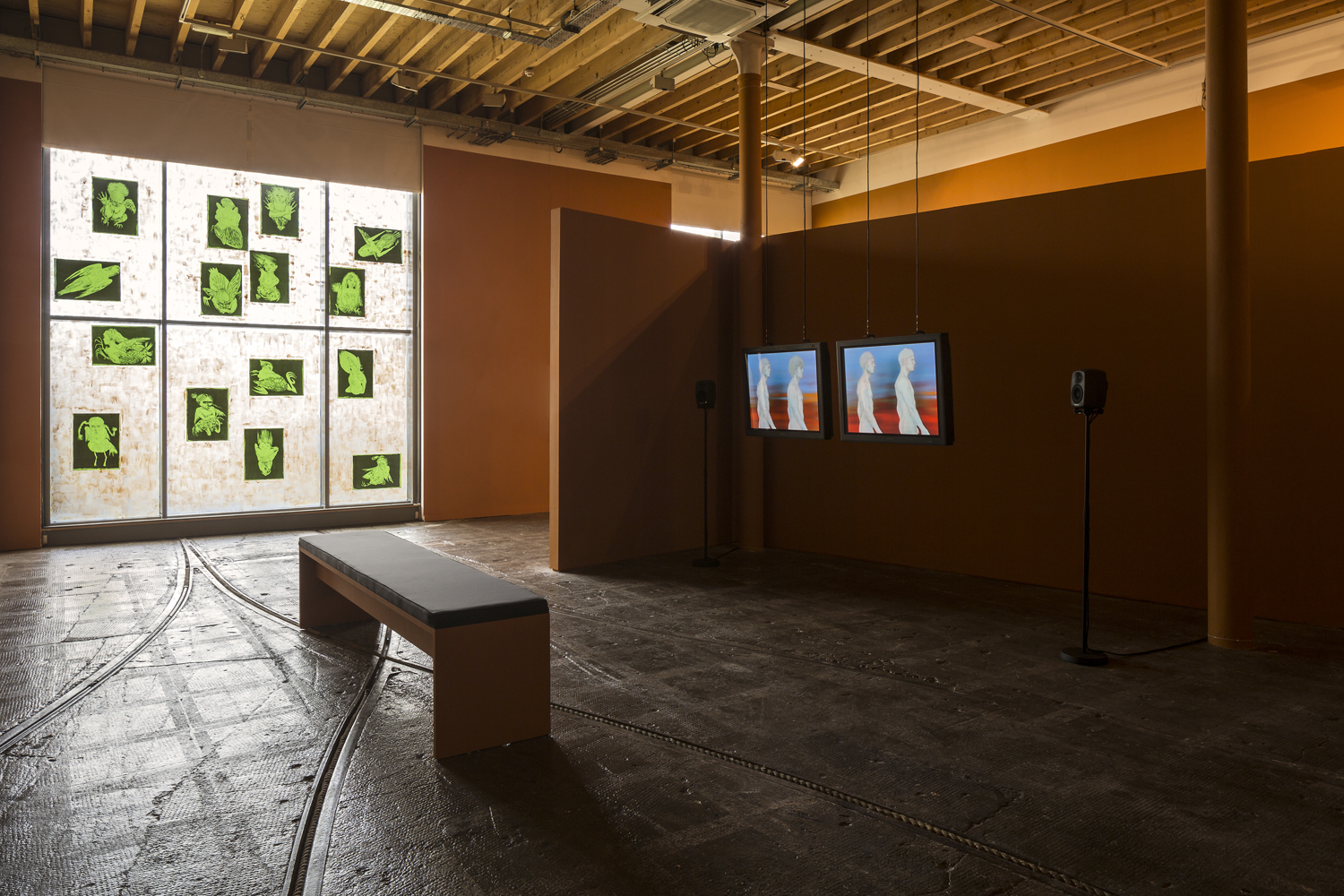
Ashley encounters no one, though it’s suggested people are behind car windows, inside grand villas, watching them from the headland, and creeping around the cottage at night: there’s the anxiety of an intrusive public, but with no communication that might open up other possibilities for relation. So, isolated, bouncing off fear and memory, Ashley’s sense of gender reaches a kind of terminal momentum. Isolation can be healing; being alone with difficult thoughts of feelings can lead to a kind of breaking through. I think this is the most optimistic reading of Ashley. This ordeal of aloneness compels the character, eventually, to trust themself (having no other options), assert themself (goaded into resistance), and refuse internalisation.
Can you explain a little bit about the technique People Have Come? And the notion that “For certain kinds of people the desire to be seen, recognised, and understood is as powerful as the urge to hide, be illegible, and repel investigation”?
‘Techniques’ are a way to talk about my work that I’ve developed in my talks over the past few years. I try to name and describe things that happen over and over in my practice, intentional or not, and in varied forms. So one technique, for example, I call High Walls. That’s about setting up obstacles to accessing or clearly perceiving parts of my work, physically or otherwise. Another technique is called Arson, because I find a lot of my work ending with things on fire, metaphorically or otherwise. People Have Come describes courting and avoiding publicness.
“I like to speak in code, in double meanings, to make my positions shifting and multifaceted”
Even in answering this question I’m challenged: explaining exactly what I mean in this public form entails personal risk. Ambiguity is one of the ways I can veil and protect myself. I like to speak in code, in double meanings, to make my positions shifting and multifaceted, and this excites me as a creative methodology. Still, I want to also have a public life, to some degree. I don’t want to have to hide; I want to make things and share them; I want to reach the right people in the right way. When it works, and connection and communication happens, it’s wonderful, breathtaking.
This might be familiar to stigmatised people. The split desire to share, be candid, and live truthfully, and to be safe, protected, and entitled to nuance is what this ‘technique’ touches on; it’s an ongoing challenge, and I think it’s worth thinking about.





